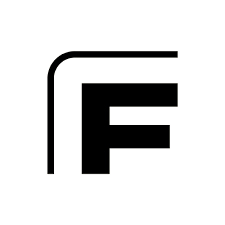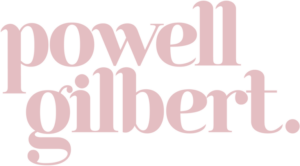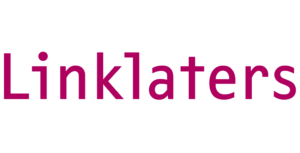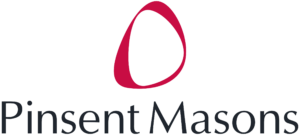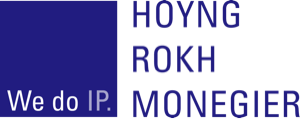Amgen, Inc v. Sanofi-Aventis Deutschland GmbH et al & Regeneron Pharmaceuticals Inc., Decision, UPC Court of Appeal 25 November 2025, Case nos UPC_CoA_528/2024 and UPC_CoA_529/2024
The UPC Court of Appeal has just issued its decision in Amgen v. Sanofi & Regeneron, providing its first on the merits guidance on the UPC’s approach to inventive step. It also explains the UPC approach to interpretation and sufficiency of medical use claims (and many more).
The Court of Appeal overturned the UPC’s first revocation Decision of the Munich Central Division: the patent was found to be valid.
HEADNOTES
Claim interpretation
1. The question of whether conclusions can be drawn from the subject matter of a dependent claim and its features when interpreting the main claim depends on the circumstances of the individual case. If the dependent claim is only adding an additional feature that does not provide a more specific description
of the features of the main claim, it generally argues against the possibility of drawing conclusions about the interpretation of the main claim from this dependent claim.
2. When the claims are drafted in ‘medical use-format’, it is an inherent claim feature that the claimed product must be objectively suitable for the claimed use, i.e. be therapeutically effective. This requires that the claimed treatment causes a noticeable improvement of the medical condition of the patient
suffering from the disease mentioned in the claim, i.e. the treatment must be meaningful.
3. The fact that the skilled person does not derive any minimum required effect from the claim or the description does not lead to another conclusion, since the feature of therapeutic effect does not follow from the claim language that is to be interpreted, but from the use of the medical use claim format.
Added matter
4. The assessment of whether there is added matter is a question of law to be decided on the basis of the facts brought forward by the parties. The facts are the relevant claims and the application as filed. Since the test is whether the relevant claims have basis in the application as a whole, the Court is allowed to look at the entire document.
Sufficiency
5. Sufficiency has to be examined on the basis of the patent as a whole, thus on the basis of the claims, description and drawings, from the perspective of the skilled person with his common general knowledge at the filing or priority date.
6. The test to be applied is whether the skilled person is able to reproduce the claimed subject matter on the basis of the patent without any inventive effort and without undue burden. An invention is sufficiently disclosed if the patent specification shows the skilled person at least one way – and in case of functional features: one technical concept – of performing the claimed invention.
7. Where a claim contains one or more functional features, it is not required that the disclosure includes specific instructions as to how each and every conceivable embodiment within the functional definition(s) should be obtained. A fair protection requires that variants of specifically disclosed embodiments that are equally suitable to achieve the same effect, which could not have been envisaged without the invention, should also be protected by the claim. Consequently, any non-availability of some embodiments of a functionally defined claim is immaterial to sufficiency, as long as the skilled person through the disclosure is able to obtain suitable embodiments within the scope of the claim.
8. A reasonable amount of trial and error does not prevent the invention from being enabled.
9. The burden of presentation and proof lies with the party invoking invalidity of the patent.
Inventive step
10. The approach taken by the Unified Patent Court when establishing inventive step is as follows.
11. It first has to be established what the object of the invention is, i.e. the objective problem. This must be assessed from the perspective of the skilled person (m/f – hereinafter referred to as ’it’), with its common general knowledge, as at the application or priority date (also referred to as the relevant date) of the
patent. This must be done by establishing what the invention adds to the state of the art, not by looking at the individual features of the claim, but by comparing the claim as a whole in context of the description and the drawings, thus also considering the inventive concept underlying the invention (the technical teaching), which must be based on the technical effect(s) that the skilled person on the basis of the application understands is (are) achieved with the claimed invention.
12. In order to avoid hindsight, the objective problem should not contain pointers to the claimed solution.
13. The claimed solution is obvious when at the relevant date the skilled person, starting from a realistic starting point in the state of the art in the relevant field of technology, wishing to solve the objective problem, would (and not only: could) have arrived at the claimed solution.
14. The relevant field of technology is the field relevant to the objective problem to be solved as well as any field in which the same or similar problem arises and of which the person skilled in the art of the specific field must be expected to be aware.
15. A starting point is realistic if the teaching thereof would have been of interest to a skilled person who, at the relevant date, wishes to solve the objective problem. This may for instance be the case if the relevant piece of prior art already discloses several features similar to those relevant to the invention as claimed and/or addresses the same or a similar underlying problem as that of the claimed invention. There can be more than one realistic starting point and the claimed invention must be inventive starting from each of them.
16. The skilled person has no inventive skills and no imagination and requires a pointer or motivation that, starting from a realistic starting point, directs it to implement a next step in the direction of the claimed invention. As a general rule, a claimed solution must be considered not inventive / obvious when the skilled person would take the next step prompted by the pointer or as a matter of routine, and arrive at the claimed invention.
17. A claimed solution is obvious if the skilled person would have taken the next step in expectation of finding an envisaged solution of his technical problem. This is generally the case when the results of the next step were clearly predictable, or where there was a reasonable expectation of success.
18. The burden of proof that the results were clearly predictable or the skilled person would have reasonably expected success, i.e. that the solution he envisages by taking the next step would solve the objective problem, lies on the party asserting invalidity of the patent.
19. A reasonable expectation of success implies the ability of the skilled person to predict rationally, on the basis of scientific appraisal of the known facts before a research project was started, the successful conclusion of that project within acceptable time limits.
20. Whether there is a reasonable expectation of success depends on the circumstances of the case. The more unexplored a technical field of research, the more difficult it was to make predictions about its successful conclusion and the lower the expectation of success. Envisaged practical or technical difficulties as well as the costs involved in testing whether the desired result will be obtained when taking a next step may also withhold the skilled person from taking that step. On the other hand, the stronger a pointer towards the claimed solution, the lower the threshold for a reasonable expectation of success.
21. When the patentee brings forward and sufficiently substantiates uncertainties and / or practical or technical difficulties, the burden of proof that these would not prevent a skilled person from having a reasonable expectation of success, falls on the party alleging obviousness.
22. The fact that other persons or teams were working contemporaneously on the same project does not necessarily imply that there was a reasonable expectation of success. It may also indicate that it was an interesting area to explore with a mere hope to succeed.
The decision can be read here.


